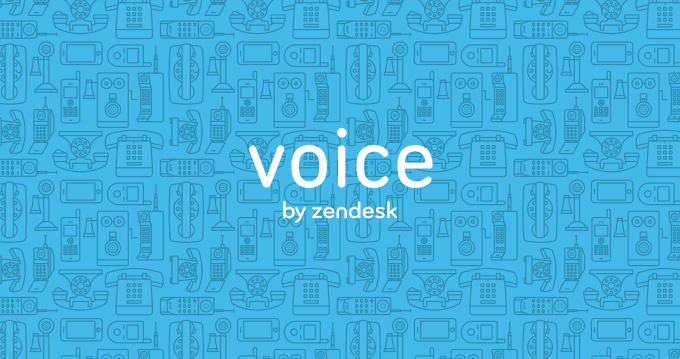Crafting A Customer Experience: Zendesk Rolls Out Advanced Voice
Time to read: 2 minutes

A good customer support call is like an espresso shot – short, sweet, and carefully crafted. There’s no joy to be had in getting lost in a phone tree, or toiling on hold, no matter what side of the phone you’re on. The critical component in building excellent customer experiences is context, and Zendesk, a cloud based customer service platform, is doubling down on it with Advanced Voice.
For starters, let’s hammer out what I mean by “context.” Context means I don’t have to spell my name out five times in one call. It means when I call support, the agent answers “I see that you emailed yesterday about this issue. Let’s get it sorted out.” That is an espresso shot of support goodness.
Neil Weldon, Product Manager at Zendesk, helped architect the Zendesk technology that their customers use to power phone support. “Core to what Zendesk does, is making the customer experience as good as it can be. We work to make it intuitive so they [agents] get the right information at the right time,” says Weldon.
Serving up that correct information at the correct time takes a variety of different tools. Zendesk uses Twilio Voice, Twilio Client, Lookup, Task Router, and Queue to make sure agents get the information they need on a customer immediately and programmatically. “The user isn’t going to have to explain themselves again, or listen to a ringing tone,” says Weldon.
Let’s say you’re a customer who dials into a fictional company I just made up – Ocelot Enterprises – and I’m an Ocelot Enterprise support agent using Zendesk. If you’ve called in before, your name, phone number, and previous tickets will appear in front my screen instantly. If you need to be transferred from one department to another, I can perform what’s called a warm transfer. I’ll be able to give all your pertinent information to the next call agent so you get the help you need faster.
Zendesk knows that their customers range from two person startups to large enterprise customers. Zendesk let their customers choose what tools they’ll need, and ensures they can use all of them in one place. While smaller shops might not need a massive IVR, they can still make Zendesk work for them, and get started helping customers over the phone in minutes. When they grow, they can reliably scale on the platform as their company grows.
Zendesk had to do some scaling of their own using the Twilio platform when they shipped Zendesk Advanced Voice. They relied on Twilio’s Global Low Latency to ensure their customers could make calls anywhere in the world without encountering the infamous “No, you go first” audio lag problem. Zendesk also changed up the language that powers their workflow, switching from Ruby to Go.
“Once we started to think seriously about Go as an option, we started developing immediately,” says Weldon. Zendesk primarily uses Javascript, but said that Go was their language of choice when building out the code that powers complex call flows.
Since shipping Advanced Voice this December, Zendesk has onboarded hundreds of customers and are using the Twilio platform to meet their needs. “The feedback has been really good,” says Weldon. Now the team is focused on continuously improving Advanced Voice as they welcome more customers.
Learn more about Zendesk’s Advanced Voice here
Related Posts
Related Resources
Twilio Docs
From APIs to SDKs to sample apps
API reference documentation, SDKs, helper libraries, quickstarts, and tutorials for your language and platform.
Resource Center
The latest ebooks, industry reports, and webinars
Learn from customer engagement experts to improve your own communication.
Ahoy
Twilio's developer community hub
Best practices, code samples, and inspiration to build communications and digital engagement experiences.


